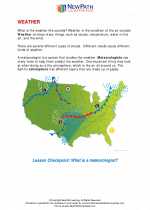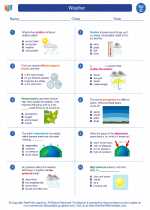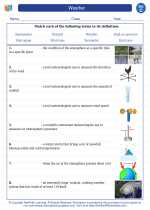Law of Inertia
The law of inertia, also known as Newton's first law of motion, states that an object at rest will stay at rest, and an object in motion will stay in motion with a constant velocity unless acted upon by an external force. This means that objects tend to resist changes in their state of motion.
Key Concepts
- Inertia: Inertia is the tendency of an object to resist changes in its motion. The greater the mass of an object, the greater its inertia.
- Rest and Motion: Objects at rest remain at rest, and objects in motion continue to move at a constant speed and in a straight line unless acted upon by an external force.
- External Force: An external force is required to change the state of motion of an object. Without an external force, an object will maintain its current state of motion.
Examples
Here are some everyday examples that illustrate the law of inertia:
- A book resting on a table will remain at rest until someone applies a force to move it.
- A moving car will continue to move forward at a constant speed unless the driver applies the brakes or a force acts to change its motion.
- A soccer ball kicked along the ground will eventually come to a stop due to friction and other forces acting upon it.
Study Guide
Here are some key points to remember when studying the law of inertia:
- Define inertia and explain how it relates to an object's resistance to changes in motion.
- Describe scenarios that illustrate the law of inertia in action, both at rest and in motion.
- Understand the concept of external forces and how they affect an object's state of motion.
- Identify situations in which the law of inertia is evident in everyday life.
Understanding the law of inertia is fundamental to comprehending the behavior of objects in motion and at rest. By grasping this concept, you can better understand the principles that govern the motion of all objects in the universe.
[Law Of Inertia] Related Worksheets and Study Guides:
.◂Science Worksheets and Study Guides Third Grade. Weather
Study Guide Weather
Weather  Worksheet/Answer key
Worksheet/Answer key Weather
Weather  Worksheet/Answer key
Worksheet/Answer key Weather
Weather  Worksheet/Answer key
Worksheet/Answer key Weather
Weather  Vocabulary/Answer key
Vocabulary/Answer key Weather
Weather  Vocabulary/Answer key
Vocabulary/Answer key Weather
Weather 

 Worksheet/Answer key
Worksheet/Answer key
 Worksheet/Answer key
Worksheet/Answer key
 Worksheet/Answer key
Worksheet/Answer key
 Vocabulary/Answer key
Vocabulary/Answer key
 Vocabulary/Answer key
Vocabulary/Answer key

The resources above cover the following skills:
EARTH AND SPACE SCIENCE (NGSS)
Earth’s Systems
Students who demonstrate understanding can:
Represent data in tables and graphical displays to describe typical weather conditions expected during a particular season.